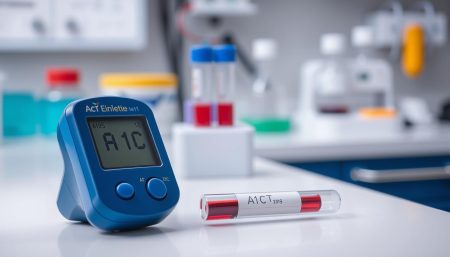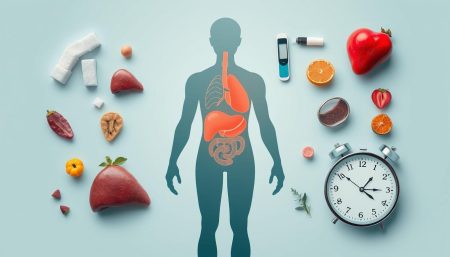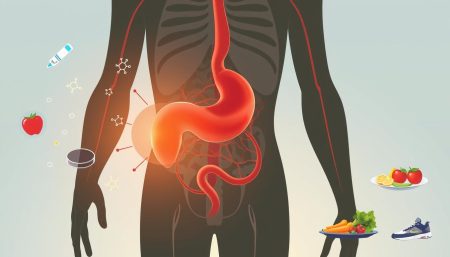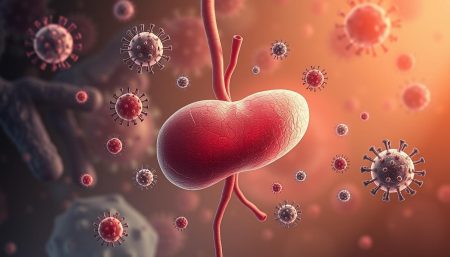For millions worldwide, diabetes mellitus starts with small changes in the body. These changes are often missed. Knowing the early symptoms of diabetes is key to managing this chronic condition. Finding diabetes early is vital for long-term health and avoiding serious problems.
The body sends warning signs when something is wrong. Spotting diabetes mellitus symptoms early can prevent future health issues. These signs can be mild, so staying alert is important. Learning about diabetes warning signs helps those at risk get medical help early.
Learning about early signs is not about causing worry. It’s about being proactive about our health. This can greatly impact managing diabetes mellitus effectively. It’s a reminder not to ignore signs like extra thirst, unexpected weight changes, or fatigue.
Understanding Diabetes Mellitus and Its Impact
Diabetes Mellitus is a metabolic disorder that’s becoming a big health issue worldwide. It shows different diabetic symptoms, making it key to catch it early. We’ll look into what the disease is, its global numbers, and why spotting signs of diabetes quickly is so important.
Defining Diabetes Mellitus
Diabetes, or Diabetes Mellitus, is a chronic condition with high blood sugar levels. It stops the body from making or using insulin well. Insulin is a hormone that controls blood sugar. Type 1 diabetes is when the body attacks insulin-making cells. Type 2 diabetes often comes from genetics and lifestyle, leading to type 2 diabetes symptoms.
The Global Prevalence of Diabetes
The World Health Organization says diabetes cases have quadrupled in 30 years. This rise shows we must spot signs of diabetes early. Symptoms include more thirst, frequent urination, and unexplained weight loss. Finding diabetes early is key to avoiding serious problems.
The Importance of Early Detection
Finding diabetes early is vital for managing and possibly curing it. Knowing diabetic symptoms early can lower the risk of serious issues like kidney failure, heart disease, and vision loss. Studies show early diagnosis and treatment greatly improve diabetics’ health over their lifetime.
Spotting type 2 diabetes symptoms early is not just about personal health. It’s also a public health issue. By improving how we understand and find diabetes, we can lessen its impact. This helps keep people’s quality of life high and lowers healthcare costs worldwide.
| Diabetes Type | Key Characteristics | Common Symptoms |
|---|---|---|
| Type 1 Diabetes | Autoimmune dysfunction | Frequent urination, unexpected weight loss, extreme hunger |
| Type 2 Diabetes | Lifestyle and genetic factors | Increased thirst, slow wound healing, blurred vision |
The Science Behind Diabetes Mellitus Symptoms
Understanding diabetes mellitus symptoms is key to knowing how the disease affects us. This article dives into the body’s changes due to diabetes mellitus symptoms. It shows how these changes lead to different health problems. High blood glucose levels harm cells and organs over time.
Hyperglycemia symptoms happen when the body can’t use glucose right. This is due to a lack of insulin (Type 1 Diabetes) or insulin resistance (Type 2 Diabetes). As glucose stays in the blood, it causes symptoms we can see and measure.
- Persistent Thirst and Increased Urination: Too much glucose in the blood pulls water from tissues. This leads to dehydration and more thirst and urine.
- Blurred Vision: High blood sugar pulls fluid from the eyes’ lenses. This makes it hard to focus.
- Extreme Fatigue: Not getting enough energy from glucose makes us tired.
The body’s fight to control high blood glucose and the failure of insulin to work right causes diabetes mellitus symptoms. The table below shows how these symptoms relate to the body’s glucose imbalance.
| Symptom | Physiological Impact |
|---|---|
| Increased urine output | Kidney’s response to high glucose levels |
| Fatigue | Poor glucose utilization as energy |
| Blurred Vision | Fluid imbalance affecting the eyes |
Knowing these processes helps us understand diabetes better. It shows why early diagnosis and treatment are so important. They help prevent serious problems. Effective treatment plans are key to managing diabetes mellitus symptoms.
Common Early Symptoms of Type 2 Diabetes
Spotting the early signs of type 2 diabetes is key to managing it well. Here, we look at common symptoms that show type 2 diabetes is starting.
Increased Thirst and Frequent Urination
One key sign is feeling very thirsty and needing to pee a lot. This happens because your kidneys work hard to clear glucose from your blood. This effort pulls water from your body, making you thirsty and needing to pee more.
Unexplained Weight Loss and Hunger
Many people with type 2 diabetes lose weight without trying. This is because their bodies can’t use glucose for energy. So, they start burning fat and muscle, leading to weight loss and hunger.
Fatigue and Blurred Vision
Feeling tired is common in type 2 diabetes because your body can’t turn glucose into energy well. Also, high blood sugar can make your eyes’ lenses pull in fluid, causing blurry vision. These are signs of diabetes.
| Symptom | Explanation | Possible Causes |
|---|---|---|
| Increased Thirst & Urination | Body dehydrated from fluid loss to balance glucose | Kidney overactivity due to high blood sugar |
| Unexplained Weight Loss | Energy deficit from poor glucose processing | Body burning fat and muscle for energy |
| Fatigue | General feeling of weariness from energy shortage | Inefficient glucose to energy conversion |
| Blurred Vision | Fluid imbalance affecting the eyes | High blood sugar pulling fluids from ocular tissues |
Spotting these early signs is important. Seeing a doctor quickly can lead to early treatment. This can improve your life and lower the risk of serious problems.
Identifying Signs of Type 1 Diabetes
Type 1 diabetes often starts in kids and young adults. It’s when the body can’t make insulin because of damaged beta cells in the pancreas. Spotting signs of diabetes early is key to better management and outcomes. This part explains important symptoms and when to seek medical help right away.
Emergency Symptoms
Type 1 diabetes can sometimes start with severe symptoms that need quick attention. The American Diabetes Association says to watch for:
- Ketoacidosis, when blood becomes too acidic from ketones
- Severe dehydration and fast, deep breathing
- Confusion or even losing consciousness (diabetic coma)
These are medical emergencies. Parents and caregivers need to watch closely for these signs in young kids.
The Onset of Type 1 Diabetes
Type 1 diabetes can start quickly and without warning. Knowing the early signs is critical for quick action. JDRF and studies show that catching these signs early can help manage the disease better and prevent serious problems. Here’s a quick look at the early signs of diabetes for Type 1:
| Sign | Description | Urgency Level |
|---|---|---|
| Incessant Thirst | Unusual increase in thirst not linked to recent activity or hot weather | Monitor closely |
| Excessive Urination | Need to urinate frequently, including during the night | Consult healthcare provider |
| Weight Loss | Unexpected weight loss despite normal eating habits | Seek immediate advice |
| Fatigue | Unusual tiredness and a decline in energy levels | Monitor and consult |

Being aware and acting fast when you see diabetes mellitus symptoms is vital for managing Type 1 diabetes. Teaching kids about these signs can help catch the disease early. This ensures they get the right treatment and care right away.
Diabetes Mellitus Symptoms in Women and Men
It’s important to know the differences in diabetes mellitus symptoms between women and men. Hormones play a big role in how symptoms show up in each gender.
Women might have special diabetic symptoms like gestational diabetes during pregnancy. They also might have polycystic ovary syndrome, which can lead to insulin resistance. These issues affect how diabetes is managed in women.
- Yeast infections and urinary tract infections
- Skin changes, such as acanthosis nigricans
- Oral and dental complications
Men, on the other hand, might show different symptoms because of their body and hormones. Men often face symptoms like:
- Decreased muscle mass
- Sexual dysfunction
- In some cases, larger waist circumference related to insulin resistance
It’s key for both men and women to watch for any signs of diabetes mellitus symptoms. Seeing a doctor early can help manage diabetes better. Knowing the specific symptoms for each gender can lead to better treatment plans.
Hyperglycemia Symptoms and Management
Knowing hyperglycemia symptoms is key for those with diabetes mellitus symptoms. It helps manage and prevent serious problems. High blood sugar can cause big health issues if not controlled, making good blood sugar management very important.
Recognizing Hyperglycemia
Spotting hyperglycemia early is key to avoiding diabetes complications. Signs include thirst, needing to pee a lot, feeling tired, blurry vision, and headaches. Catching these signs early helps people act fast to keep their blood sugar in check.
Lifestyle Adjustments to Control Blood Sugar
Dealing with diabetes mellitus symptoms means big lifestyle changes. These changes not only help control blood sugar but also improve health overall.
- Dietary modifications: Eating a balanced diet with lots of fiber and less sugar and fat helps manage blood sugar.
- Regular exercise: Staying active boosts insulin sensitivity and helps muscles take up more glucose.
- Consistent monitoring: Checking blood sugar often helps see if lifestyle changes are working.
| Blood Sugar Levels | Recommended Actions |
|---|---|
| 180-250 mg/dL | Increase water intake, adjust meal plan. |
| 250-350 mg/dL | Consider moderate exercise, consult healthcare provider for medication adjustment. |
| 350 mg/dL and above | Seek medical attention immediately, avoid exercise. |
Using these strategies well takes commitment and sometimes a healthcare expert’s help. They make sure changes and treatments fit each person’s health needs.
Diabetes Warning Signs That Demand Immediate Attention
Managing diabetes means knowing when to act fast. Some symptoms are serious and need quick medical help. This part talks about Diabetic Ketoacidosis (DKA) and Hypoglycemia. These are big health risks that can be deadly if ignored. It’s important to act quickly to avoid serious problems.
Diabetic Ketoacidosis (DKA)
DKA is a serious issue, mainly for those with type 1 diabetes but can also hit type 2 diabetes patients. It happens when the body lacks insulin and starts breaking down fat for energy. This leads to acid buildup in the blood, called ketones. Immediate medical attention is key if you see any signs of DKA.
Hypoglycemia and Its Risks
Hypoglycemia, or low blood sugar, is a big emergency for diabetes patients, mainly those on insulin. Signs of severe hypoglycemia include confusion, seizures, and losing consciousness. It’s vital for patients or their caregivers to act fast and get medical help right away.
| Condition | Common Symptoms | Immediate Actions |
|---|---|---|
| Diabetic Ketoacidosis (DKA) | Breath that smells fruity, nausea, vomiting, rapid breathing, confusion. | Check blood sugar, administer insulin, hydrate, and seek emergency medical help. |
| Hypoglycemia | Shaking, sweating, rapid heartbeat, blurred vision, sudden mood changes. | Consume fast-acting carbohydrates, use glucagon kits if necessary, and seek medical help. |
Staying alert to these diabetes warning signs and knowing what to do can greatly reduce risks. It’s all about being proactive with serious diabetic symptoms.
Diabetic Neuropathy Symptoms and Prevention
Diabetic neuropathy is a common problem for people with diabetes, affecting nearly half. It damages the nerves, causing various symptoms. Knowing these symptoms and how to prevent them can greatly improve life quality.
Symptoms include numbness, tingling, or pain in the feet and hands. These feelings get worse at night, making it hard to sleep. Some people feel very sensitive to touch, even light contact.
Not noticing injuries can lead to infections, which is a big risk, mainly in the feet. This is because poor circulation is common in people with diabetes.
Preventive Measures: To avoid or delay neuropathy, managing diabetes well is key. Important steps include:
- Keeping blood sugar levels in check.
- Getting regular check-ups to watch nerve health.
- Eating a balanced diet low in sugars and fats.
- Doing regular exercise to boost blood flow and nerve health.
Managing diabetes well can lower the risk of neuropathy and other problems. Early action and careful management are vital for diabetes care. For those with symptoms, treatments aim to ease pain and manage symptoms.
Gestational Diabetes Symptoms and Risks
Gestational diabetes often shows up during pregnancy, with specific gestational diabetes symptoms to watch for. It affects both the mother’s health and the baby’s well-being. Spotting the signs of diabetes early is key to managing it and ensuring a healthy pregnancy.
Understanding Gestational Diabetes
Gestational diabetes happens because of hormonal changes in pregnancy that make it hard for insulin to work. It usually goes away after the baby is born but needs quick attention. If you’re feeling very thirsty, need to pee a lot, or are tired all the time, see your doctor.
Monitoring and Managing Blood Sugar During Pregnancy
Keeping blood sugar levels in check is vital for managing gestational diabetes. The American College of Obstetricians and Gynecologists suggests regular blood glucose checks. A balanced diet and exercise are also important. Working with your healthcare team, including dietitians and diabetes experts, is essential for a healthy pregnancy.
| Week of Pregnancy | Blood Sugar Level (mg/dL) | Recommended Action |
|---|---|---|
| 1-12 | 95 or less | Monitor and maintain healthy eating habits |
| 13-28 | 100-120 | Increase monitoring frequency, adjust diet |
| 29-40 | 120-140 | Consult healthcare provider for possible insulin therapy |
Knowing the gestational diabetes symptoms and keeping an eye on them helps manage the condition. It also protects the health of both mom and baby. Learning about signs of diabetes in pregnancy can lead to better health for families.
Diabetes Mellitus Symptoms in Children and Adolescents
Diabetes is becoming more common worldwide. It’s important to know the diabetic symptoms and signs of diabetes in kids and teens. Finding and treating diabetes early can make a big difference in their lives.
Kids and teens often show symptoms that are missed or misunderstood. It’s key for parents and caregivers to spot these signs early. This way, they can start treatment right away.
- Increased lethargy and reduced interest in daily activities may signal abnormal blood sugar levels.
- Frequent urination and excessive thirst are classic diabetic symptoms prominent in the youth.
- Unexplained weight loss, even with normal eating patterns, can be an indicator.
- Blurry vision, which could affect academic performance, is a less recognized symptom.
The table below shows diabetic symptoms in teens compared to adults. It highlights the need for specific care and treatment for young people.
| Symptom | Commonality in Children | Commonality in Adults |
|---|---|---|
| Excessive Thirst and Urination | Very Common | Common |
| Unexplained Weight Loss | Common | Less Common |
| Fatigue | Common | Variable |
| Blurry Vision | Less Common | Common |
Diabetes symptoms in kids can look like other health problems. It’s important to know the signs of diabetes. Getting medical help and doing tests quickly is key to managing diabetes in young people.
Advanced Diabetic Symptoms and Complications
As diabetes gets worse, it’s key to watch for advanced symptoms. Knowing these serious issues helps manage and prevent them.
Chronic Kidney Disease and Diabetes
Diabetes can lead to chronic kidney disease (CKD). CKD means your kidneys slowly lose function. It’s important to screen for CKD early to stop it from getting worse.
Cardiovascular Health and Diabetes
People with diabetes often face heart problems. High blood sugar damages blood vessels, causing heart disease and stroke.
Diabetic Retinopathy and Vision Health
Diabetic retinopathy is a serious eye issue. It happens when blood vessels in the retina get damaged. Regular eye checks are vital to catch it early.
| Complication | Impact | Preventative Measure |
|---|---|---|
| Chronic Kidney Disease | Decreased kidney function, need for dialysis | Regular blood pressure and kidney function tests |
| Cardiovascular Disease | Increased risk of heart attack and stroke | Monitoring cholesterol and triglyceride levels |
| Diabetic Retinopathy | Potential loss of vision | Annual eye exams |
Lifestyle Factors That Influence Diabetes Mellitus Symptoms
Living with diabetes mellitus means understanding how lifestyle choices affect diabetes mellitus symptoms. What you eat, how active you are, and how you handle stress are key. Making healthier choices can help manage the condition better.

Knowing how lifestyle and diabetes interact is key for health control with diabetes mellitus. Here’s how certain lifestyle changes can impact symptoms or the condition itself:
- Diet: Eating a balanced diet low in refined sugars and high in fiber can stabilize blood sugar.
- Physical Activity: Regular exercise lowers blood sugar and improves insulin sensitivity, which is vital for type 2 diabetes management.
- Stress Management: Chronic stress can harm blood sugar control. Stress reduction techniques like meditation or yoga can help.
- Medication Adherence: Taking diabetes medication or insulin as advised is critical for controlling diabetes mellitus symptoms.
These factors not only manage symptoms but also improve overall health and well-being. They offer a holistic way to manage diabetes.
Navigating Diabetic Symptoms with Proper Nutrition and Exercise
Managing diabetes mellitus symptoms well needs a smart plan for diet and exercise. It’s not just about cutting down sugar. It’s about knowing how food affects blood sugar. Eating whole grains, lean proteins, and fiber-rich veggies and fruits is key.
Starches are okay in small amounts for energy. Choose low glycemic index ones to keep blood sugar stable. Also, controlling food portions is vital to avoid too many calories that can mess with glucose levels.
Exercise is also vital for diabetes control. It makes the body more responsive to insulin, helping control blood sugar. Doctors suggest a mix of cardio and strength training for best results.
They recommend at least 150 minutes of moderate activity weekly. Plus, muscle-strengthening exercises on two or more days a week. Adding simple activities like taking stairs or dancing can also help.
Combining good nutrition with regular exercise lessens diabetes symptoms and boosts health. It improves heart health, helps with weight, lowers stress, and lifts mood. For diabetics, these changes are not just short-term fixes but long-lasting improvements.
While it may take time to adjust, the long-term benefits are huge. A healthier lifestyle can change lives and extend them.
FAQ
Q: What are some early symptoms of diabetes mellitus?
A: Early signs of diabetes include feeling very thirsty and needing to pee a lot. You might also feel hungry all the time, lose weight without trying, and feel tired. Blurry vision and getting sick often are other signs.
Q: Why is it important to detect diabetes mellitus early?
A: Finding diabetes early is key. It helps manage the disease better. It also prevents serious problems and improves your health in the long run.
Q: How common is diabetes mellitus globally?
A: Diabetes is a big problem worldwide. The World Health Organization says it has grown a lot. From 108 million in 1980 to 422 million in 2014.
Q: What are the differences between Type 1 and Type 2 diabetes?
A: Type 1 diabetes is when your body doesn’t make enough insulin. It usually starts in kids and young adults. Type 2 diabetes is when your body can’t use insulin well. It’s more common and linked to lifestyle and genes.
Q: What causes the symptoms of diabetes mellitus?
A: High blood sugar causes diabetes symptoms. This happens when your body can’t make or use insulin right. It leads to changes and symptoms in your body.
Q: What are common early symptoms of Type 2 diabetes?
A: Early signs of Type 2 diabetes include being very thirsty and peeing a lot. You might also feel hungry all the time, lose weight, feel tired, and see things blurry.
Q: What are emergency symptoms of Type 1 diabetes that require immediate attention?
A: Emergency signs of Type 1 diabetes include fruity breath, nausea, and vomiting. You might also breathe fast, feel confused, and very tired. Hypoglycemia, or low blood sugar, is also urgent and can make you shake, sweat, feel confused, or pass out.
Q: Are diabetes mellitus symptoms different in women and men?
A: Many diabetes symptoms are the same for both men and women. But women might get yeast infections and have trouble with sex. Men might feel weaker and lose muscle.
Q: What are the symptoms of hyperglycemia, and how can it be managed?
A: Hyperglycemia symptoms include being very thirsty, peeing a lot, dry mouth, and feeling tired. To manage it, eat healthy, exercise, check your blood sugar, and take your medicine as told.
Q: What are the signs of diabetic ketoacidosis (DKA) and hypoglycemia?
A: DKA signs include nausea, being very thirsty, peeing a lot, stomach pain, and breath smelling like fruit. Hypoglycemia signs are sweating, feeling dizzy, shaking, hungry, irritable, and confused. Both need quick medical help.
Q: What are the symptoms and prevention methods for diabetic neuropathy?
A: Diabetic neuropathy symptoms are numbness, tingling, pain, and weakness in hands and feet. To prevent it, keep your blood sugar in check, check your feet, and make healthy lifestyle choices.
Q: How does gestational diabetes present, and what are the risks involved?
A: Gestational diabetes symptoms are like other diabetes, like being thirsty and peeing a lot. It can make babies too big and born early. It also raises the chance of getting Type 2 diabetes later.
Q: What symptoms might indicate diabetes in children and adolescents?
A: Kids and teens might get irritable, change weight, feel tired, and be thirsty and pee a lot. Symptoms in young people can be more severe or happen fast.
Q: What are some advanced diabetic symptoms and complications?
A: Advanced symptoms include kidney disease, heart problems, and eye issues. Look out for swelling, numbness, chest pain, and vision changes.
Q: How do lifestyle factors influence diabetes mellitus symptoms?
A: Your diet, exercise, stress, and medicine use affect diabetes symptoms. A healthy lifestyle can help control symptoms and slow diabetes progression.
Q: What are the best nutrition and exercise practices for managing diabetic symptoms?
A: Eat foods high in fiber, low in sugar, and balanced carbs. Regular exercise improves insulin use and helps with weight control, which is key for managing symptoms.


















